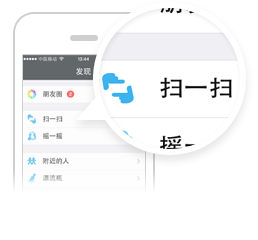дёҖ:йӣҶеҗҲзҡ„еҹәжң¬жҰӮеҝө
FoundationжЎҶжһ¶дёӯ,жҸҗдҫӣдәҶNSSetзұ»,е®ғжҳҜдёҖз»„еҚ•值еҜ№иұЎзҡ„йӣҶеҗҲ,дё”NSSetе®һдҫӢдёӯе…ғзҙ жҳҜж— еәҸ,еҗҢдёҖдёӘеҜ№иұЎеҸӘиғҪдҝқеӯҳдёҖдёӘ,
并且е®ғд№ҹеҲҶдёәеҸҜеҸҳе’ҢдёҚеҸҜеҸҳзҡ„йӣҶеҗҲеҜ№иұЎпјҲеҸҜеҸҳйӣҶеҗҲеҜ№иұЎ,NSMutableSetпјү
дәҢ:дёҚеҸҜеҸҳйӣҶеҗҲ-NSSet
1:еҲқе§ӢеҢ–(зұ»似ж•°з»„зҡ„еҲӣе»ә)
//зұ»似дёҺж•°з»„зҡ„жһ„е»ә,зӣҙжҺҘеҲӣе»әдёҖдёӘйӣҶеҗҲ
NSSet *set1=[[NSSet alloc]initWithObjects:@"one",@"tow", nil]; NSLog(@"%@",set1);
2пјҡйҖҡиҝҮж•°з»„зҡ„жһ„е»әйӣҶеҗҲ
//йҖҡиҝҮж•°з»„иҝӣиЎҢжһ„е»ә NSArray *array1=[NSArray arrayWithObjects:@"one",@"tow", nil]; NSSet *set2=[NSSet setWithArray:array1]; NSLog(@"%@",set2);
3:йҖҡиҝҮе·ІжңүйӣҶеҗҲиҝӣиЎҢжһ„е»ә
//йҖҡиҝҮе·Іжңүзҡ„йӣҶеҗҲиҝӣиЎҢжһ„е»әNSSet *set3=[NSSet setWithSet:set2]; NSLog(@"%@",set3);3пјҡйӣҶеҗҲеҜ№иұЎзҡ„ж•°йҮҸ
//йӣҶеҗҲдёӯеёёз”Ёж–№жі•NSInteger *count=[set3 count]; NSLog(@"%ld",count);4:иҝ”еӣһйӣҶеҗҲдёӯзҡ„жүҖжңүе…ғзҙ
//йӣҶеҗҲдёӯжүҖжңүзҡ„е…ғзҙNSArray *array2 =[set3 allObjects]; NSLog(@"%@",array2);5:иҝ”еӣһйӣҶеҗҲдёӯд»»ж„ҸдёҖдёӘе…ғзҙ
//иҝ”еӣһйӣҶеҗҲдёӯд»»ж„ҸдёҖдёӘе…ғзҙNSString *str=[set3 anyObject]; NSLog(@"%@",str);6:жҹҘиҜўйӣҶеҗҲдёӯжҳҜеҗҰеҢ…еҗ«жҹҗдёӘе…ғзҙ
//жҹҘиҜўйӣҶеҗҲдёӯжҳҜеҗҰеӯҳеңЁжҹҗдёӘе…ғзҙ Boolean result1=[set3 containsObject:@"two"]; if(result1){ NSLog(@"еҢ…еҗ«two"); }else{ NSLog(@"дёҚеҢ…еҗ«two"); }7:жҹҘиҜўйӣҶеҗҲе’ҢйӣҶеҗҲжҳҜеҗҰжңүдәӨйӣҶ
//жҹҘиҜўйӣҶеҗҲй—ҙжҳҜеҗҰжңүдәӨйӣҶBOOL result2= [set1 intersectsSet:set2]; NSLog(@"%d",result2);8пјҡйӣҶеҗҲзҡ„еҢ№й…Қ
//еҲӨж–ӯйӣҶеҗҲй—ҙжҳҜеҗҰеҢ№й…ҚBOOL result3=[set1 isEqualToSet:set2]; NSLog(@"%d",result3);9пјҡжҳҜеҗҰжҳҜдёҖдёӘйӣҶеҗҲзҡ„еӯҗйӣҶ
//жҳҜеҗҰжҳҜдёҖдёӘйӣҶеҗҲзҡ„еӯҗйӣҶBOOL result4=[set1 isSubsetOfSet:set2]; NSLog(@"%d",result4);10пјҡеңЁдёҖдёӘйӣҶеҗҲдёӯж·»еҠ дёҖдёӘж–°е…ғзҙ иҝ”еӣһж–°зҡ„йӣҶеҗҲ
NSSet *set5=[NSSet setWithObjects:@"one",nil];NSSet *appSet=[set5 setByAddingObject:@"tow"]; NSLog(@"%@",appSet);11пјҡеңЁдёҖдёӘйӣҶеҗҲдёӯж·»еҠ дёҖдёӘйӣҶеҗҲ,иҝ”еӣһж–°зҡ„йӣҶеҗҲ
//еңЁдёҖдёӘйӣҶеҗҲдёӯж·»еҠ дёҖдёӘйӣҶеҗҲNSSet *set6=[NSSet setWithObjects:@"1",@"2", nil]; NSSet *appSet1=[set5 setByAddingObjectsFromSet:set6]; NSLog(@"%@",appSet1);12:еңЁдёҖдёӘйӣҶеҗҲдёӯж·»еҠ дёҖдёӘж•°з»„,иҝ”еӣһж–°зҡ„йӣҶеҗҲ
//еңЁдёҖдёӘйӣҶеҗҲдёӯж·»еҠ дёҖдёӘж•°еӯ—NSArray *appArray=[NSArray arrayWithObjects:@"x",@"y", nil]; NSSet *appSet2=[set5 setByAddingObjectsFromArray:appArray]; NSLog(@"%@",appSet2);дёү:еҸҜеҸҳйӣҶеҗҲ--NSMutableSet
1пјҡеҲӣе»әеҲқе§ӢеҢ–еҸҜеҸҳйӣҶеҗҲ
//еҲӣе»әеҲқе§ӢеҢ–еҸҜеҸҳйӣҶеҗҲNSMutableSet *mutableSet1=[NSMutableSet Set];//з©әйӣҶеҗҲ NSMutableSet *mutableSet2=[NSMutableSet setWithObjects:@"1",@"2", nil]; NSMutableSet *mutableSet3=[NSMutableSet setWithObjects:@"a",@"2", nil];2:д»ҺйӣҶеҗҲдёӯеҺ»йҷӨзӣёеҗҢзҡ„е…ғзҙ
//дёӨдёӘйӣҶеҗҲеҺ»йҷӨзӣёеҗҢзҡ„йғЁеҲҶ[mutableSet2 minusSet:mutableSet3]; NSLog(@"%@",mutableSet2);3:жұӮдёӨдёӘйӣҶеҗҲзҡ„е…¬е…ұе…ғзҙ
//жұӮдёӨдёӘйӣҶеҗҲзӣёеҗҢзҡ„е…ғзҙ[mutableSet2 intersectSet:mutableSet3]; NSLog(@"%@",mutableSet2);4:еҗҲ并дёӨдёӘйӣҶеҗҲ
//дёӨдёӘйӣҶеҗҲиҝӣиЎҢеҗҲ并[mutableSet2 unionSet:mutableSet3]; NSLog(@"%@",mutableSet2);









